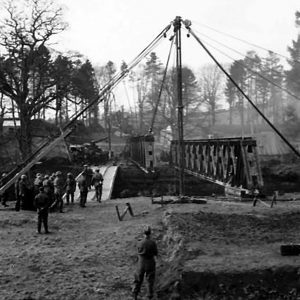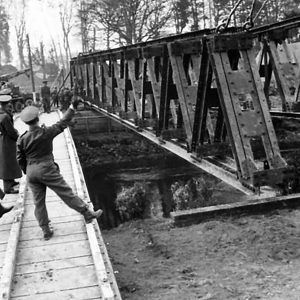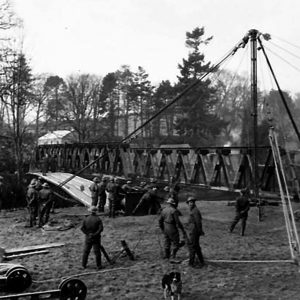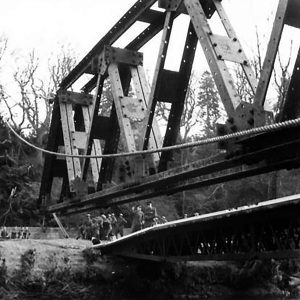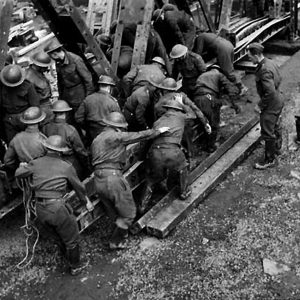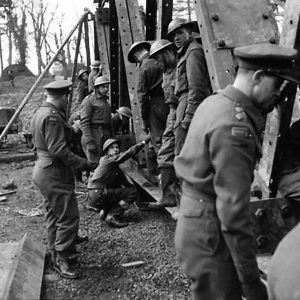Gilford Castle is a Victorian Scots Baronial-style house or 'castle' dating back to around 1865. Build of Portland stone and Scrabo sandstone, the house stands on a site occupying around 207 acres. In 1635, Scottish settler John Magill acquired the land from the Magennis Clan. A village developed on the edge of the River Bann, and "Magill's Ford" eventually became Gilford.
In the 1860s, Benjamin Dickson, a partner in the Dunbar McMaster linen firm purchased the estate. He was a keen farmer and used the lands to breed Shorthorn cattle and horses. He hired Glaswegian architect William Spence to design the castle as seen today. Dickson never lived in the house. The first resident is thought to have been Percy Jocelyn McMaster from 1887 to 1891.
Miss Katherine Carleton purchased the estate after Dickson’s death in 1894, and sold it on to James F. Wright in 1914. The house has remained in the Wright family since.
British Soldiers
Following the Dunkirk Evacuation of June 1940, British soldiers began to arrive in Gilford, Co. Down. None would stay in the house but many had their accommodation in the estate and demesne.
582 Army Field Company and 583 Army Field Company of Kent Fortress Royal Engineers arrived in 1940 having served in the Netherlands, Belgium, and France. 583 Army Field Company encamped along the Wall Road just above the Gilford Castle Gate Lodge. British Army lorries had driven them from the nearby Madden Bridge Railway Station near Tandragee, Co. Armagh on their arrival.
With the formation of Kent Corps Troops Royal Engineers in September 1940, the Engineers at Gilford were joined by 297 (London) Field Park Company Royal Engineers and 584 (Suffolk) Army Field Company Royal Engineers also arrived at Gilford Castle. They had not been part of the British Expeditionary Force at Dunkirk. Gilford Castle was an early stop on their first tour of duty. Their camp occupied the opposite side of the River Bann, running alongside the Banbridge Road and back towards the castle.
Also camped along the Banbridge Road, at the back gates of the castle, was part of 5th Battalion Royal Irish Fusiliers for a 5 month period in the summer and autumn of 1940. Accompanied by the Regimental Pipes and Drums, the soldiers stayed in tents on the Gilford Castle estate.
American and Belgian Soldiers
Soldiers of the United States Army arrived in Gilford in 1943. A Medical Detachment of 1st Squadron, 6th Cavalry of the United States Army set up base next to the old Wall Road Camp. Their camp overlooked the back of the castle and contained a military hospital. One high-profile visitor to the camp during the Second World War was General George S. Patton. American soldiers made their mark on the estate. Visitors to the site today can still see the scars left on pillars by sentries sharpening their bayonets in 1943.
In 1945, the estate of Gilford Castle was home to officers and soldiers of 4th (Steenstraete) Infantry Brigade of the Belgian Army. For most of the Second World War, Gilford Castle itself remained unused. Its owner Wing-Commander Michael Wright was serving in the Royal Air Force.
